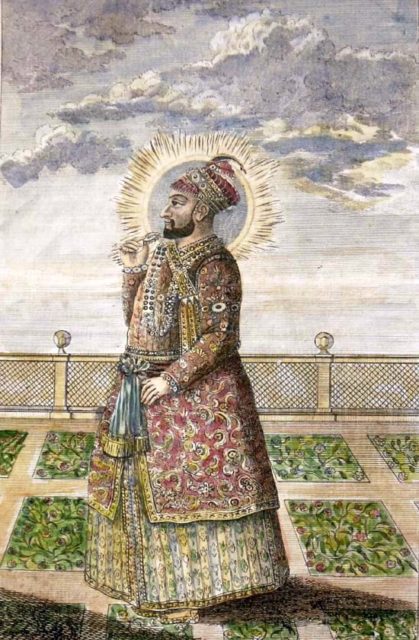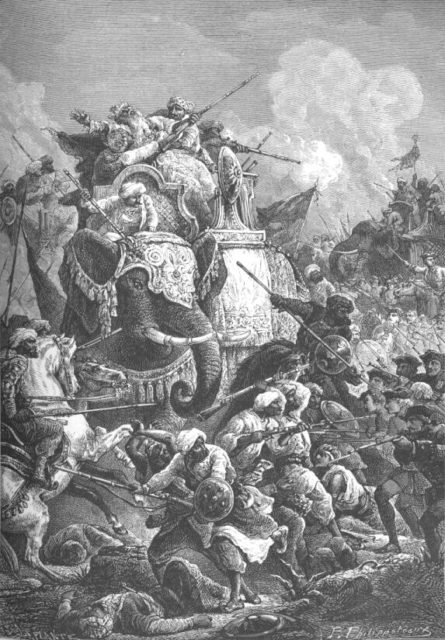One of the first applications of rockets outside of China occurred in southern India in the 18th century. Not rockets to go to the moon or explore space, but rockets used as weapons.
Hyder Ali Kahn, Sultan of the Kingdom of Mysore, a trendsetter in the military use of rockets, is believed to have been born about 1720 in Budikote, Karnataka in southeast India.
He was the fifth child of Fath Muhammad, a powerful military commander in his own right.
Little is known of his mother other than she was the third wife of Fath who is believed to be descended from the Prophet Muhammed.
Although Hyder was illiterate, he had an exceptional ability for recall and was a gifted mathematician. He made sure his children received good educations. Hyder did not enter military service until after the combat-related death of his father in 1725.
Fath was a pioneer in the use of rockets, but during his military service they were primarily used for signaling.

The rockets used at Mysore used iron tubes to contain black powder propellant and were strapped to a bamboo shaft. The launch angle depended upon the diameter of the cylinder in relation to the distance of the target.
Some of the launchers were mobile and were capable of launching simultaneous missiles.
The missiles were actually swords which could be launched about one thousand yards with razor edges being hurled toward the enemy. Some had steel blades attached to points along the bamboo which spun around slicing through everything in their path.
The splintered bamboo also served as mutilating daggers. Rockets were not used exclusively for warfare. When a delegation of the Jacobin Club of Mysore was sent to Hyder’s son, Tipu Sultan, 500 rockets were launched as a salute.
After Hyder’s death from cancer in 1782, Tipu Sultan commanded at least two rocket units during the Third Anglo-Mysore War in 1792 against the British and the East India Company. Lt. Co. Knox, while moving his army of 131 men south toward the Kaveri River was attacked near Srirangapatna by Tipu’s 120 soldiers in February of 1792.
Eventually, Tipu’s Rocket Corps consisted of about five thousand men.
In the Fourth Anglo-Mysore War Tipu’s rocket units defeated the army of Colonel Arthur Wellsley at the Battle of Sultanpet Tope.
A British officer by the name of Forrest is quoted as saying, “At this point there was a large tope, or grove, which gave shelter to Tipu’s rocket men and had obviously to be cleaned out before the siege could be pressed closer to Srirangapattana Island.
The commander chosen for this operation was Col. Wellesley, but advancing towards the tope after dark on the 5 April 1799, he was set upon with rockets and musket-fires, lost his way and…had to postpone the attack until a more favorable opportunity should offer.”
Although the rocket units had previously flanked the British camps with rockets and six thousand infantry joined by a corps of French soldiers directed by Mir Golam Hussain and Mohomed Hulleen Mir Mirans, an attack was launched by Colonel Wellsley which succeeded with no loss of life to the British.
According to a young British officer regarding the flanking attack, “So pestered were we with the rocket boys that there was no moving without danger from the destructive missiles.
The rockets and musketry from 20,000 of the enemy were incessant. No hail could be thicker. Every illumination of blue lights was accompanied by a shower of rockets, some of which entered the head of the column, passing through to the rear, causing death, wounds, and dreadful lacerations from the long bamboos of twenty or thirty feet, which are invariably attached to them.”

In May 1799, Tipu’s fort was destroyed when an enemy shot exploded a store of black powder with a cloud of black smoke and white light emerging from multiple detonations.
Although having been met with furious musket fire, the fort was overtaken two days later, and Tipu was killed, ending the Anglo-Mysore Wars.
After recovering 600 launchers, 700 serviceable rockets and 9,000 empty rockets from Tipu’s fort, the British sent the weapons home to be examined. The Royal Woolwich Arsenal began a military rocket research and development program in 1801.
In 1807 William Congreve published a study entitled “A Concise Account of the Origin and Progress of the Rocket System”.
The technology, named after Congreve, became common use for the British in the Napoleonic wars and again in the War of 1812, inspiring Francis Scott Keys’ “The Star Spangled Banner”.
